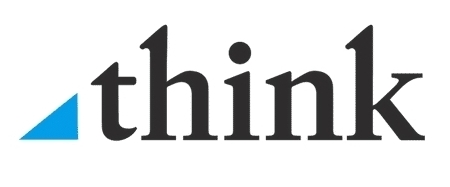AI Summary
- Linshom Medical is the first company to deliver a wearable FDA-cleared respiratory profile device to the patient bedside, providing early warning of respiratory problems and avoiding rapid response activations, rescue events, ICU transfers, and deaths.
- The current standard of care for respiratory monitoring outside of the operating room and ICU is inadequate, with 90% of adverse event warnings being missed. Linshom Medical’s sensor aims to continuously and cost-effectively monitor patients’ respiration to intercept these events.
- Linshom Medical has achieved significant milestones, including FDA clearance in 2022, ongoing clinical studies funded by a $2.4 million NIH grant, and raising $3.3 million in non-dilutive funds from various sources. The company has also published data proving the efficacy of their technology.
- TEDCO has been a valuable partner, providing a convertible note and subsequent investments in the company’s series A round.
- The Maryland Industrial Partnerships Grant and the NIH funding are supporting the company’s growth plans, including the completion of a study at Ohio State and the miniaturization of their sensor.
- The company aims to launch their product in the market by next year, targeting the home monitoring market for COPD and chronic heart failure patients.
Richard Hughen’s thirty years of professional medical device experience spans three Fortune 500 and four start-up companies with two successful exits to date. He is currently CEO of Linshom Medical, a start-up developing a novel continuous predictive respiratory monitoring device for the patient bedside and home. Ric was an investor and member of the executive team that built start-up CSA Medical, from a technology license (Navy) through product development, animal trials, clinical trials, five FDA clearances, CE mark, three rounds of funding ($50M), commercial growth and a 2019 sale to Steris. Ric was Managing Director of LearnWare, a life science focused e-learning start-up, which was successfully built and sold to a private equity fund. He is currently a reviewer for the National Science Foundation’s SBIR/STTR program, an Entrepreneur in Residence for Johns Hopkins Tech Ventures and on the advisory board for George Mason University’s Bioengineering Alliance. He is founder of Life Science Planning, a strategic consultancy for life science companies with focus on fast paced start-up, early stage and emerging growth companies. Earlier in his career, Ric led various senior management, marketing, training and sales teams for Johnson & Johnson, BD, Abbott and Cordis. Ric holds MBA and BS degrees from The Pennsylvania State University. When not working, he is typically outside training for triathlon competition.
Connect with Richard on LinkedIn
Interview questions:
Introduction | Linshom Medical is focused on eliminating the morbidity, mortality, and expense of unrecognized respiratory decline in healthcare. Can you provide an introduction to the company and the device?
Sure, Linshom Medical is the first to deliver a wearable, FDA-cleared, operating room quality respiratory profile to the patient bedside providing early warning of problems and thus avoiding costly rapid response activations, rescue events, ICU transfers, and some deaths.
Current technology in the operating room and intensive care unit works great, but it is not transferable to the patient’s bedside because it is too large, complex and expensive.
Monitoring | How does your sensor improve on current respiratory monitoring?
The problem is that respiratory monitoring is absent in much of health care. Areas like the general care floors, the emergency room, and the post-anesthesia care unit (PACU) simply don’t monitor respiration. Then when patients go home there is no monitoring solution either.
Current standard of care (SOC) for respiratory monitoring outside of the operating room (OR) and intensive care unit (ICU) is responsive; alarms go off when the patient is already in trouble. SOC is clinical observation, or eyes on the patient and pulse oximetry (not a respiratory monitor). This misses the majority of adverse event warnings. This results in avoidable, costly rapid response team activations, rescue events (codes), ICU transfers, and some deaths.
Linshom offers an OR quality respiratory profile at the patient bedside which provides advance warning of decline, when simple intervention(s) can be taken by health care providers and avoid the morbidity and mortality of late (responsive) action.
Career | Your career included stints at Abbott, J&J-Cordis, Learnware BD and CSA Medical as well as Entrepreneur-in-Residence at UM Ventures and Johns Hopkins Technology Ventures. Please share some highlights of your career and the decision to join Linshom Medical in 2018.
https://www.linkedin.com/in/richardhughen/details/experience/
I have been in the medical device business my entire career, since finishing graduate school. My early experience is in Fortune 100 giants as you detailed. These are terrific companies and provided excellent training and experience for what I am doing now. The move to Cordis Cardiology was an effort to be in a smaller company and move to interventional or therapeutic devices. Half of that agenda worked as J&J bought us a few years in. That incented me to go really small to join LearnWare which was an eLearning / eMarketing startup that we pivoted to focus on the pharmaceutical and medical device industries and eventually sold to a PE firm. After a short time at BD, I joined CSA Medical as the 4th or 5th employee. Half of this company sold to Steris in 2019 and the other half is still in clinical study development for a chronic bronchitis treatment. After that I was doing some consulting and scouting technology for the next adventure. TEDCO asked me to help Linshom, a portfolio company, get un-stuck from a regulatory, fund raising and commercialization standpoint. I found the technology to be terrific with great patent protection and huge market potential. That was 5 years ago.
FDA / Clinical Study | When and how did you receive FDA clearance? Ie. Cleveland Clinic and Harvard. What is the status of your clinical study? ie, Ohio State University Wexner Medical Center
We received our first FDA clearance in 2020 to establish our device as a predicate (or the comparator) for future submissions, one of which will occur before the end of this year.
The clinical study at Ohio State University (OSU) is funded by a $2.4 million dollar SBIR grant from NIH and on 10/1/23 we moved from phase 1 funding to phase 2 funding. The goal here is to prove our ability for early detection of respiratory decline. OSU has been an enrollment dream with over 400 patients enrolled since March of this year. Early analysis confirms that the Linshom parameters identify respiratory decline well in advance of current standard of care.
Awards/ Grants | Can you share recent milestones from the last couple of years? Ie. $800K US Air Force SBIR contract and the NIH $2.4 million SBIR grant.
We have raised $3.3 million in non-dilutive funds from NIH, the US Air Force, Maryland Industrial Partnerships, Lighthouse Labs and ATI. To date we have matched our investor’s capital dollar for dollar. Other major milestones included issued patents worldwide, a new patent filing in October, FDA clearance, Published data from Cleveland Clinic, Brigham & Women’s hospital, and the Univ. of Misssissippi, the completion of phase 1 study at Ohio State, and the start of phase 2 of our study at OSU. We are currently subscribing a $3M Series A round led by TEDCO, Maryland Momentum Fund and Abell Foundation. $1.6M of that is in the bank and another $400K is reserved. So we have some room now for new investors, but this A round will close shortly.
Funding | Can you provide an overview of your funding to date? Ie. Maryland Momentum Fund
https://gust.com/companies/linshom-2
We started with $1.6M of convertible notes ($2M with interest) that ran in parallel to our $800K of US Air Force SBIR funding. Those notes fully converted when we started our Series A round. That $3M Series A preferred round is currently subscribed at $1.6M, with $400K reserved, leaving about $1M left for new investors, but this A round will close shortly.
Growth | What are the growth plans for Linshom
Our near-term goal is to finish the study at OSU while miniaturizing our sensor for use in other form factors like a nasal cannula and a home monitoring solution. The $2.4M NIH grant funds these two milestones. With the OSU data we believe we can do a limited market launch to a few early adopters in late ’24.
 Linshom Medical is first to deliver an Operating Room quality respiratory profile to the patient bedside or homefor continuous, predictive respiratory monitoring (CPRM). Our patented and FDA cleared device provides a respiratory profile including Respiratory Rate (RR), trend of relative Tidal Volume (rTV) and Seconds Since Last Breath(SSLB) that are all delivered continuously and in real time. Our mission is to eliminate the morbidity, mortality and cost due to unrecognized respiratory compromise in healthcare with the first predictive respiratory device vs. the current responsive systems used today. For more information, visit https://linshomforlife.com/.
Linshom Medical is first to deliver an Operating Room quality respiratory profile to the patient bedside or homefor continuous, predictive respiratory monitoring (CPRM). Our patented and FDA cleared device provides a respiratory profile including Respiratory Rate (RR), trend of relative Tidal Volume (rTV) and Seconds Since Last Breath(SSLB) that are all delivered continuously and in real time. Our mission is to eliminate the morbidity, mortality and cost due to unrecognized respiratory compromise in healthcare with the first predictive respiratory device vs. the current responsive systems used today. For more information, visit https://linshomforlife.com/.
Recent News: https://linshomforlife.com/news-about-linshom


Edwin Warfield, CEO of citybiz.co, conducts CEO Interviews.
If you’re interested in a citybiz CEO Interview, please contact
Edwin Warfield – edwin.warfield@citybizlist.com






























































